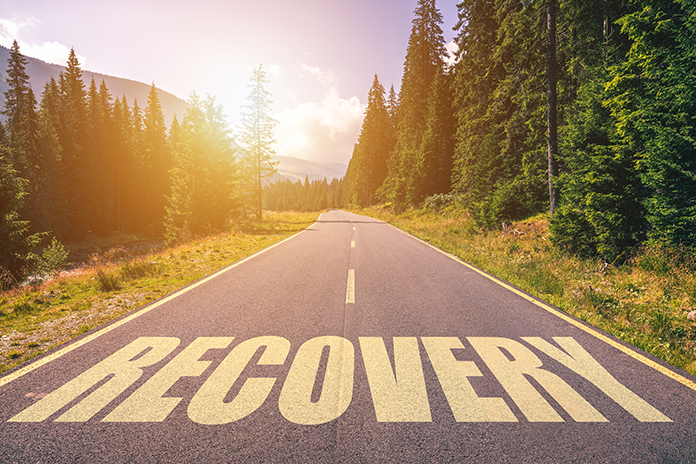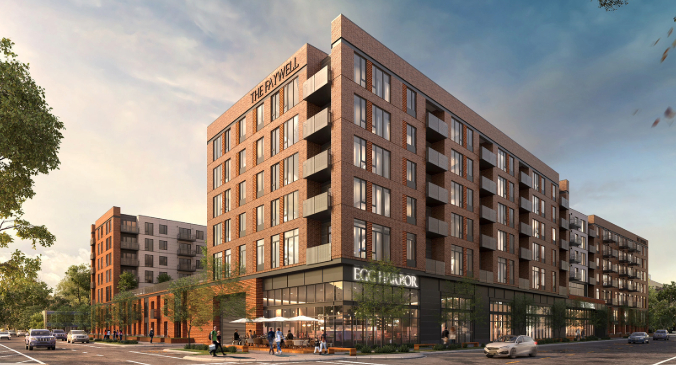Acoustics experts and healthcare professionals agree that unwanted sound, which is the basic definition of noise, can be a whole lot more than simply annoying. Depending on its loudness, frequency and other qualities, noise can cause serious health problems, exacerbate mental illness, diminish productivity and impede child development, creating what some are calling a modern plague.
And multifamily builders had better take heed of the warnings if they want to avoid increases in both vacancies and law suits, as a qrowing number of organizations–like the New York City-based 30-year-old Noise Control Foundation, an organization dedicated to stimulating public policies to reduce the impact of noise on society, and the three-year-old NoiseOFF, a citizens coalition against noise pollution–sound the alarm, increasing public awareness of the long-ignored hazard’s potentially disastrous impact.
From the womb to the grave, we are vulnerable to the dangers of noisy environments, particularly at either end of the age spectrum, say the experts, but public awareness of the problem currently is about where recognition of secondhand smoke danger was a half-century ago. Urban noise control efforts date back to ancient Rome, where chariots were banned from streets at night and some cities in Medieval Europe forbade horse-drawn carriages and riders from traveling their cobblestone roadways or padded streets with straw to ensure peaceful sleep for their residents.
The drafters of the Constitution had the streets outside their Philadelphia offices covered with earth to dampen traffic noise that might distract them while they wrote the document that guarantees the right to domestic tranquility, which is ever more elusive in a world that has grown much more cacophonous since then.
“In the 21st Century, we are experiencing the man-made plague of environmental noise from which there is virtually no escape, no matter where we are,” Lisa Goines, R.N., and Louis Hagler, M.D., said in a paper they co-wrote and published this year. “Secondhand noise is an unwanted airborne pollutant produced by others. It is imposed on us without our consent, often against our wills, and at times, places and volumes over which we have no control.”
Experts agree that the cacophony will only increase with population growth and urbanization, combined with ever-louder interior racket from a growing number of appliances, TVs, video games and the popularity of hard-surfaced walls, floors and counter tops off of which the literally deafening din echoes.
And that fact has profound health implications, Goines and Hagler warn, noting that even at levels not harmful to hearing, which begin at around 85 dBA (the level of sound produced by a lawnmower or food blender), noise is perceived subconsciously as a danger signal, even during sleep. “The body reacts to noise with a fight or flight response, with resultant nervous, hormonal and vascular changes that have far reaching consequences.”
“Sound becomes noise when it is deemed by the listener to be bothersome, annoying and disturbing,” Arline L. Bronzaft, Ph.D., an environmental psychologist, who has spent more than 30 years studying noise pollution and its associated physiological and psychological effects, explained in a white paper she wrote for Owens Corning.
In addition to the increase in outdoor bedlam caused by growth in air and road travel, noise in modern homes is a growing problem, she said. “Years ago, there was only one television set in a home and only one telephone. Today, there are several. Furthermore, many homes have computers, video game machines, DVD players, surround-sound systems and faxes, raising the noise level even more. With home offices on the rise, there is even more technology in homes today.”
“To carry out common activities within the home–resting, sleeping, reading, watching television, listening to music, conversing and studying, for example–the ambient sound level in the home should be less than 40 dBA,” said Bronzaft.
“Yet even as far back as 1977, the U.S. EPA estimated that 100 million American residents are exposed to more than 55 dBA in their homes and 33 million to more than 65 dBA,” Bronzaft said, adding that a study by the European Environmental Agency in 2005 concluded that around 65 percent of Europe’s population is exposed to ambient sound levels above 55 dBA.
“In the home, as well as other settings, noise levels that are generally bothersome may not result in hearing loss, but rather affect the body indirectly through a complex set of physiological responses, more commonly known as stress. These responses include a change in heart rhythm, a rise in blood pressure and a slowing down of the digestive system. If noise continues and the stress is sustained, these physiological changes can lead to ailments of the digestive, cardiovascular and circulatory systems,” she warned.
Goines and Hagler’s findings support that conclusion, indicating that cardiovascular disease risk begins with long-term exposure to noise levels above 65 dBA (the highest rating for normal conversation) or acute exposure to levels above 80 to 85 dBA, which is the noise level of a diesel truck traveling at around 40 miles per hour. Test subjects exposed to occupational or environmental noise of sufficient intensity and duration not only experience increased heart rate and blood pressure, but also increases in blood viscosity and levels of blood lipids, shifts in electrolytes and increased levels of epinephrine, norepinephrine and cortisol, they said.
The mental anguish caused by unabated noise disturbance can elicit feelings of anger and anxiety. The feelings of helplessness that result from unresolved complaints, exacerbate the stress response, said Bronzaft, who chairs the noise committee for the Council on the Environment of New York City, adding that the detrimental health effects are especially compelling regarding sleep loss. Sleep specialist Carolyn Thomas Ivey, who participated in a presentation last fall at the Dream Home that Watson Custom Home Builders constructed using Owens Corning’s QuietZone solutions for interior noise control, said the sound of ice falling out of an ice maker in the middle of the night, or environmental noises outside, airplane flyovers and loud cars can disturb your sleep. “And repetitive disturbances can have effects on your daytime activity, leading to poor performance, fatigue and mood changes,” she said recently.
Ivey, who has been involved in sleep medicine for the past 24 years, started her career at the Baptist Medical Center in Jacksonville, Fla., when the hospital first created a sleep disorder center. “And it grew from one bed to 22 beds when I retired in November, performing around 500 studies per month,” she said. As a respiratory therapist, Ivey focused mainly on sleep apnea, a condition that causes the sleeper to stop breathing briefly, resulting in interrupted sleep and sleep deprivation.
If a patient at the sleep disorder center is not diagnosed with a physical ailment, the researchers look at other issues, like the sleep environment. “In apartments and condos, maintenance activities occur. Sometimes sprinklers hitting windows and other maintenance can be very disruptive to sleep. I’ve had patients tell me that they live in an apartment or condo and their neighbors complained that they have actually heard them snoring,” she said, recommending ear plugs as a solution when there’s no other alternative.
According to the National Sleep Awareness Roundtable (NSART), a coalition of organizations dedicated to raising awareness about, increasing understanding of and reducing the public health and safety impact of sleep deprivation, the cumulative effect of sleep loss in this country is enormous. Driver fatigue alone causes more than 100,000 car crashes each year, resulting in at least 1,550 deaths, 71,000 injuries and $12.5 billion in monetary losses.
And the secondary effects of sleep deprivation that include not only fatigue, but also depressed mood, reduced feelings of well-being and decreased performance during the day, all are increased by spending those waking hours in noisy environments. Lily Wang, an architectural acoustics professor at the University of Nebraska in Lincoln, recently completed a study of indoor noise and its effects on perception and productivity in office environments, finding that when people are annoyed or distracted by unwanted sound, their performance is impaired, especially if the sound is loud and low-frequency. Acoustics experts refer to low-frequency noise as “rumbly,” as op-posed to higher frequency sounds they label “hissy.” And, rounding out those spectral content definitions is “roaring,” which is noise in the middle-frequency. But loudness affected performance most dramatically, she said.
In a suite of three rooms that mimic typical small offices, Wang and colleague Erica Bowden conducted tests that involved typing, and mathematical and verbal reasoning, finding measure-able impacts on those skills in situations where the level of noise from HVAC systems was considered annoying or distracting to the test subjects.
“In typing, we get something like a 10 percent decrease in terms of words per minute, particularly when the sound gets more rumbly. And we see similar results for math and verbal reasoning–in the six to eight percent range,” said Wang.
Testing the effects of fluctuating noise on productivity, she consistently found that the sound of a mechanical system that was turned on and off at 20-second intervals caused considerably more annoyance among the test subjects than steady background noise. And the more spectrally imbalanced the noise–especially when the imbalance was weighted on the rumbly side, the greater the decline in performance and productivity, said Wang, who now is looking at the effects of noise on productivity in the home office environment.
“We’re playing different signals in the room next door through different types of wall–signals like television, music and what we call a potpourri, which is random, like a coffee grinder going off, a blender, a dog barking and a kid playing a violin. And we have one that’s a conversation, as if a spouse were having a book club in the next room,” said Wang of her latest study, for which she predicts testing will be finished in September.
Hagler and Goines cite the detrimental effects of noise pollution in the home on children’s performance. “Cognitive and language development and reading achievement are diminished in noisy homes, even through the children’s schools may be no noisier than average,” they said, adding that children living in noisy homes can suffer from diminished learning capacity, problem solving ability, motivation, school performance and social and emotional development.
According to study results published in Pediatrics in 2001, it was estimated that 12.5 percent of American children between the ages of six and 19 years had impaired hearing in one or both ears and the personal music players many children listen to, often for extended periods of time at potentially high volume settings, may well be responsible for the impaired hearing seen with increasing frequency in this country’s kids.
And, although the effects on fetal development and newborns is still unclear, health professionals suggest that exposure to noise during pregnancy may increase the risk of high-frequency hearing loss in the newborn, heighten the danger of premature births and intrauterine growth retardation. Noisy neonatal intensive care units may cause cochlear damage and impair the growth and development of premature infants. “Even through studies have been inconsistent with respect to noise and congenital malformations, the data were sufficiently compelling for the National Research Council to recommend that pregnant women avoid noisy work settings,” they said.
At the other end of the age spectrum, hearing loss caused by exposure to noise pollution is well documented, but many also associate the condition with aging, a belief that Manhattan ear surgeon Samuel Rosen debunked in a 1965 study that compared the Mabaan, a primitive tribe with amazing sharp hearing in a remote part of southeast Sudan then unaffected by transportation or industrial noise, to a typical U.S. population. He found that aging is an almost insignificant cause of hearing loss, which is associated instead with chronic exposure to high levels of environmental noise.
And noise can not only cause deafness and physical ailments, it may quite literally drive you crazy, some researchers believe. Most agree that noise probably doesn’t cause mental illness, but can accelerate and intensify the development of latent mental disorders and may cause or contribute to anxiety, nervousness, nausea, headache, argumentativeness, sexual impotence, increased social conflict, neurosis, hysteria and psychosis.
“Noise levels above 80 dBA are associated with both increase in aggressive behavior and decrease in behavior helpful to others,” Hagler and Goines report, adding that lack of perceived control over the noise intensifies those reactions.
But politicians are slow to address the growing problem, particularly at the federal level. Although Congress passed the Noise Control Act in 1972, declaring the policy of the United States to promote an environment free from noise that jeopardizes health and welfare, the government cut off federal funding for the Office of Noise Abatement and Control in 1982, throwing responsibility for noise control to the cities and states. Some cities, like New York, have enacted municipal ordinances to quiet down their towns. “Noise complaints continue to be the number one quality of life issue for New York City residents,” Mayor Michael Bloomberg said in late December 2005, when he signed a bill that updated the city’s 30-year-old noise code. “The legislation before me,” he said, “establishes a flexible, yet enforceable noise code that responds to the need for peace and quiet, while maintaining New York’s reputation as the city that never sleeps.”
In 2005, the 311 non-emergency complaint and customer service line Bloomberg established in 2002 logged more than 335,000 calls about noise problems, with the vast majority related to neighbor noise, noted NoiseOFF in a report on the overhaul of the code that hadn’t been updated In three decades.
“Although the noise code covers some neighbor complaints, such as noisy parties, for the most part the code falls short in dealing with neighbor noises. Inadequate floor covering, slamming of doors, and young children running around excessively are noise complaints best handled by clauses in apartment leases, and callers to 311 generally are told to speak to landlords or managing agents about the problems,” the noise-control organization cautioned. Because residents and shareholders in cooperatives and condo communities often find those overseers reluctant to cope with such problems, NoiseOFF suggests the city council consider legislation that would call for enforcement of apartment leases that guarantee residents the quiet enjoyment of their homes.
So, it behooves residential developers to join the crusade against the increasingly clangorous assault on our ears, both indoors and out, by installing appropriate noise control products in the dwellings they build, because, Bronzaft says, “The quantifiable effects of noise in homes makes residential noise control a necessity, not a luxury, in our modern homes.”
















